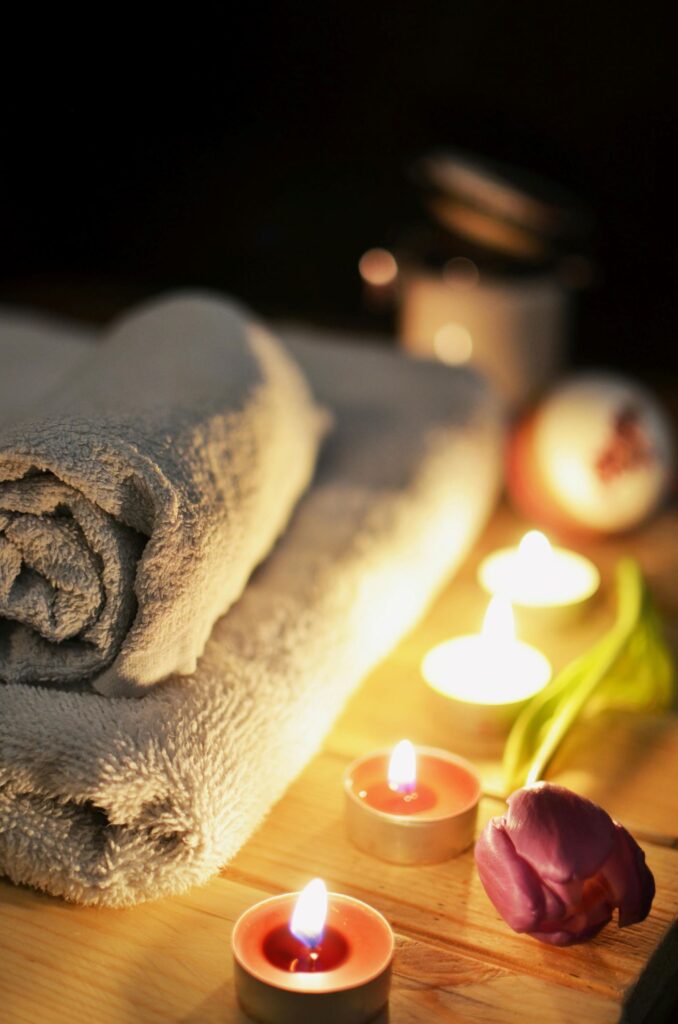Wellness
Difference Between Aromatherapy and Thai Massage
Do you want to relax and refresh your mind, body, and spirit? Aromatherapy and Thai massage are two prominent holistic techniques that can help you attain this. Although both strive to promote wellness and well-being, they take distinct approaches.

What is Aromatherapy?
Aromatherapy is a technique that uses essential oils to promote physical and mental wellbeing. These oils are known for their therapeutic effects and are taken from various sections of plants such as flowers, leaves, and roots. Aromatherapy is thought to have been developed thousands of years ago in ancient civilizations such as Egypt, China, and India.
Aromatherapy has a long history dating back to the Egyptians, who utilized essential oils for embalming and for their medicinal powers. After that, the practice spread to other civilizations, where it was employed for medical, spiritual, and beauty purposes. Aromatherapy has evolved into a popular alternative therapy for promoting relaxation, relieving stress, and improving overall well-being.
Aromatherapy has numerous advantages. The essential oils used in aromatherapy have unique qualities that can help with a variety of health issues. Lavender oil, for example, is recognized for its relaxing and sleep-inducing properties, but peppermint oil can help reduce headaches and aid digestion. Aromatherapy can benefit both the mind and the body by breathing aromatic scents or applying diluted oils physically.

What is Thai Massage?
Thai massage, also known as Nuad Bo-Rarn, is a traditional Thai healing art that includes yoga, acupressure, and stretching. It is thought to have begun over 2,500 years ago and is profoundly ingrained in Thai culture and spirituality. Thai massage is considered a spiritual technique that strives to restore balance and harmony within the body, rather than only a physical therapy.
Thai massage is performed on the floor on a mat with the recipient completely clothed. The therapist applies pressure, stretches, and manipulates the body with their hands, feet, elbows, and occasionally even their own body weight. The massage is rhythmic and flowing, incorporating deep pressure, stretching, and gentle rocking movements.
Thai massage has various advantages. Thai massage uses stretching and acupressure techniques to improve flexibility, stimulate energy flow, and promote general well-being. It can help with muscle tension, joint mobility, and stress reduction. Thai massage is also thought to increase circulation, immune system function, and mental clarity and attention.

Key Differences Between Aromatherapy and Thai Massage
While both aromatherapy and Thai massage have distinct advantages, they differ in technique and focus.
- Aromatherapy typically uses scent to promote relaxation and well-being. To increase the therapeutic effects of massages, essential oils are diffused or applied topically. The aromatic fragrances of the oils have been shown to have a significant impact on mood, emotions, and stress levels. Thai massage, on the other hand, is a hands-on therapy that works on the body’s energy pathways and pressure points. Stretching, acupressure, and yoga-like motions are used to improve flexibility, release tension, and balance the body’s energy.
- Thai massage, unlike aromatherapy, does not entail the use of essential oils or a focus on the sense of smell. It is a type of physical treatment that tries to increase energy flow throughout the body.
- Another significant distinction between aromatherapy and Thai massage is the practitioner’s level of involvement. The therapist’s job in aromatherapy is to create a calming and pleasant environment and to apply the oils in a way that enhances the therapeutic effects. Thai massage involves the therapist actively working on the recipient’s body, applying pressure and manipulating muscles and joints using their hands, feet, and body weight.

Which Therapy is Right for You?
Aromatherapy or Thai massage should be chosen based on your unique tastes, needs, and goals. Aromatherapy may be the correct choice for you if you want a calming experience that involves the use of aromatic smells to increase relaxation and relieve tension. It can be enjoyed through diffusers, massages, and even bath oils.
Thai massage, on the other hand, could be the perfect choice if you’re looking for a more stimulating and invigorating encounter that emphasizes on physical manipulation and stretching. It can enhance flexibility, relieve tension, and boost general well-being. It is crucial to remember, however, that Thai massage may be extremely intense, and it may not be ideal for everyone, particularly those with specific health concerns or injuries.
Finally, both aromatherapy and Thai massage have distinct advantages and can be excellent complements to your wellness regimen. Whether you prefer the therapeutic smells of essential oils or the healing touch of Thai massage, both methods have the ability to improve your general well-being and encourage relaxation and renewal.
Conclusion
Finally, Thai massage and aromatherapy are two natural treatments that improve health and well-being. Aromatherapy uses the healing properties of essential oils to improve both physical and mental health. Thai massage, on the other hand, uses yoga, acupressure, and stretching to make people more flexible, boost energy flow, and improve overall health.
Aromatherapy and Thai massage are mostly different in how they work and what they focus on. Aromatherapy mostly uses smells to help people relax, while Thai massage is a hands-on treatment that focuses on the body’s energy lines and pressure points. Depending on your preferences and goals, each field has its own benefits and can be a great addition to your health routine.
That being said, whether you like the relaxing scents of essential oils or the energizing stretches and acupressure of Thai massage, both can help you feel better overall and reach a state of rest and renewal.


